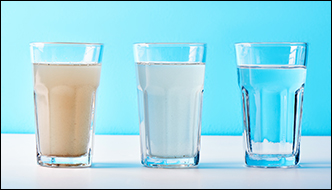
Purifying contaminated water at home can be done using several methods, such as:
- Boiling: Boiling water for at least 1 minute is an effective way to kill bacteria and viruses. Let the water cool down before drinking it to avoid burns.
- Filtering: Water filters can remove particles, bacteria, and protozoa. Some popular types of filters for home use include pitcher filters, faucet-mounted filters, and under-sink filters. Check the filter’s specifications and change it according to the manufacturer’s recommendations.
- Chlorination: Adding a small amount of chlorine bleach to water can kill bacteria and viruses. Wait at least 30 minutes before drinking the water, to allow the chlorine to work. Use only regular unscented household bleach (5.25% sodium hypochlorite) and check the recommended dosage.
- Ultraviolet (UV) light: UV light can be used to kill bacteria, viruses, and protozoa in water. UV water purifiers are available for home use and can be installed under the sink or as a countertop unit.
- Reverse Osmosis: Reverse osmosis is a process that uses pressure to force water through a membrane, removing impurities and contaminants. Reverse osmosis systems are available for home use and can be installed under the sink.
- Distillation: Distillation is a process that involves heating water to create steam, which is then collected and cooled to produce purified water. Distillers are available for home use and can be installed on the countertop.
It’s important to remember that different methods work better for different types of contaminants. Always check the water source and the level of contamination before choosing a purification method. Keep in mind that some methods can be more effective than others, depending on the specific contaminants present in the water. In cases of doubt or high levels of contamination, consult a professional or local authority.
